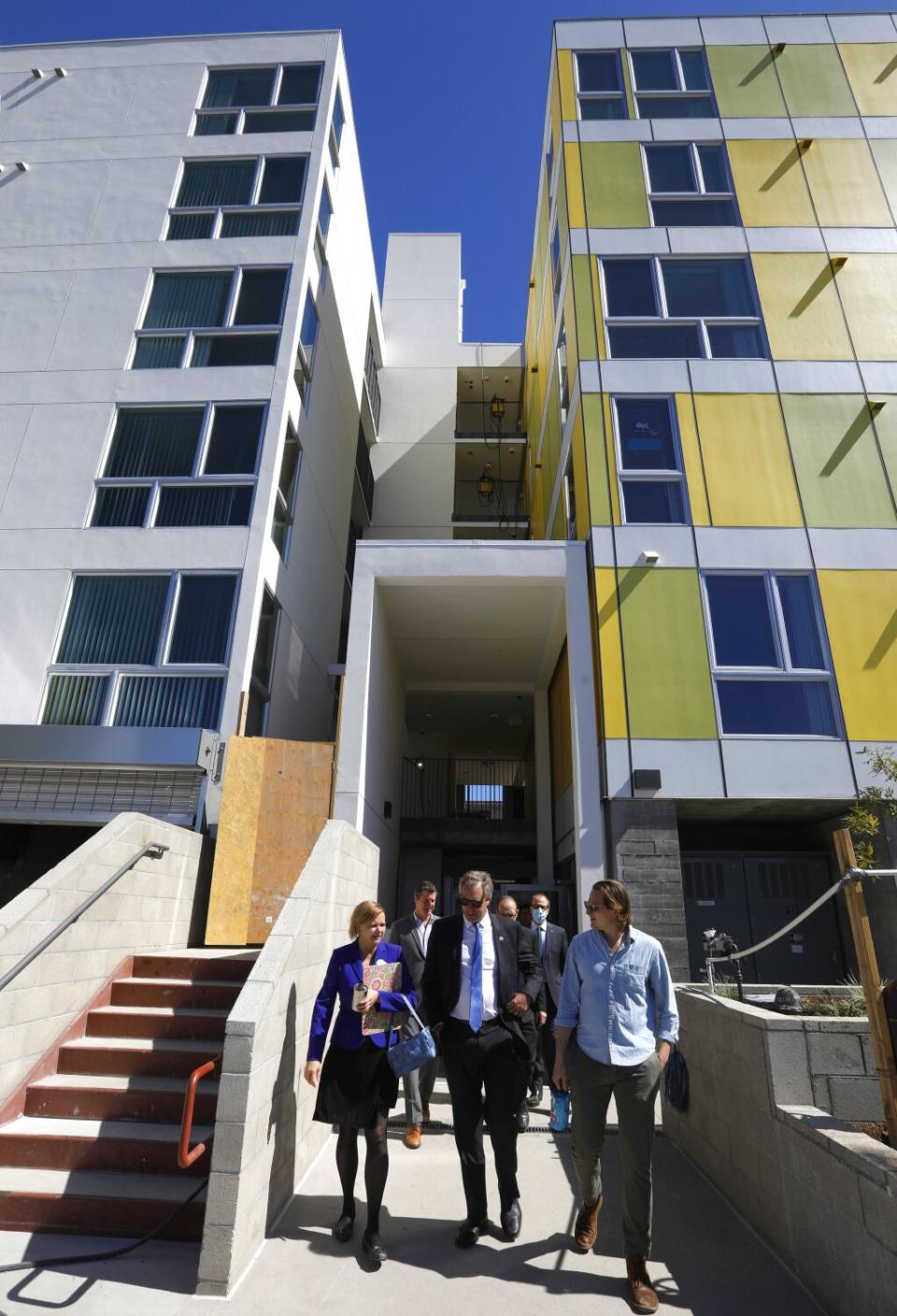Voter guide to Los Angeles city November ballot measures
Angelenos won't just be electing a new mayor and City Council members this fall. They'll have to decide whether to support two new taxes and a technical change to how housing is planned in the city of Los Angeles.
Here's what these measures are all about:
Initiative Ordinance ULA: A tax on real estate sales

No measure would have a greater impact on the bottom lines of certain residents, or on the city's ability to build housing for homeless people, than Initiative Ordinance ULA (which stands for United to House L.A.). It would impose a one-time 4% tax on property sales above $5 million that would rise to 5.5% on transactions above $10 million. A $5-million sale would generate a $200,000 tax bill.
The so-called documentary transfer tax would generate an estimated $600 million to $1.1 billion a year, according to a city analysis, and the proceeds would fund affordable housing construction, rental subsidies and tenant defense, among other things.
Proponents say this new tax is essential because city officials expect funds available for affordable housing construction to plummet in the coming years. Although the measure has received endorsements from a slew of unions, social justice groups and The Times' editorial board, neither mayoral candidate has come out in favor of it (Remember, the editorial boards operates separately from the newsroom).
Opponents of the tax include the Howard Jarvis Taxpayers Assn., a number of real estate groups and the editorial board of the Los Angeles Daily News. They say the tax could drive up rents and make Los Angeles a harder place to do business, which could cause firms to flee the city. Some also take issue with how the proposal is being pitched to voters since it's being called a "mansion tax," even though most its proceeds would come from sales of multifamily housing and commercial property.
In 2019, if this tax had been applied, nearly half the proceeds would have come from the sale of commercial properties, and 27% would have come from the sale of multifamily residences, such as apartments, according to analysis conducted by consultant Mike Kahoe, who authored a paper on the measure for the Center for Jobs & Economy and the California Business Roundtable.
If the ballot measure were already in force, sales of these two types of real estate would have raised about $690 million, while sales of expensive single-family homes would have raised just over $200 million.
Proposition SP: A tax to shore up parks

Anyone who has been to a Los Angeles park recently knows that parks are in need of a sprucing up.
The tax known as Proposition SP would authorize 8.4 cents per square foot on residential and commercial buildings. There would be about $227 million per year in proceeds and after 30 years the tax would drop to 2.2 cents per square foot and generate $60 million in perpetuity.
Supporters of this measure include Councilman Joe Buscaino, the L.A. Parks Foundation and Father Gregory Boyle of Homeboy Industries. They and others have argued that these funds would go a long way toward making green spaces safer, more pleasant and more accessible.
Opponents of the tax, who include The Times' editorial board and former county Supervisor Michael Antonovich, say the proposed tax and how the revenue would be spent are vague and not fully fleshed out, while also representing a decent-sized jump in people's tax bills. Others say this amounts to an added subsidy for funding improvements related to the 2028 Olympics, and for opponents of that events, the measure is a nonstarter.
Proposition LH: Raise the cap on affordable housing units

A 1950s provision of the state Constitution requires cities to first get the blessing of voters if they want to build publicly funded housing for poor people.
In 2008, the city passed a measure that would allow for 3,500 units of affordable housing to be built in each City Council district. City officials say certain districts are reaching that cap, and this measure would raise it to 8,500 units per district.
There is no funding mechanism as part of this measure or accompanying tax hit for voters.
A yes vote simply just raises the number of units of affordable housing that can be built. The Times' editorial board has come out in support and groups like the Southern California Assn. of Non-Profit Housing say it's necessary for the city do this in order to keep up with the demand for housing. Little if any opposition has made itself known.
How and where to vote
Ballots will be in the mail to all 22 million registered voters in the state no later than Oct. 10. Californians can return ballots by mail, drop them at collection boxes or turn them in at voting centers. They can also cast ballots early at voting centers or wait until Nov. 8 to vote at their neighborhood polling places.
Californians can register to vote or check their status at https://registertovote.ca.gov/.
Follow more election coverage
California voters head to the polls Nov. 8 to vote for U.S. Senate, governor, lieutenant governor, secretary of state, controller, treasurer, attorney general, and races for U.S. representative in Congress, state senator and state Assemblymember. Local races include who will be the Los Angeles mayor and L.A. County sheriff. There are seven ballot propositions for voters to decide on the table.
More News
This story originally appeared in Los Angeles Times.

